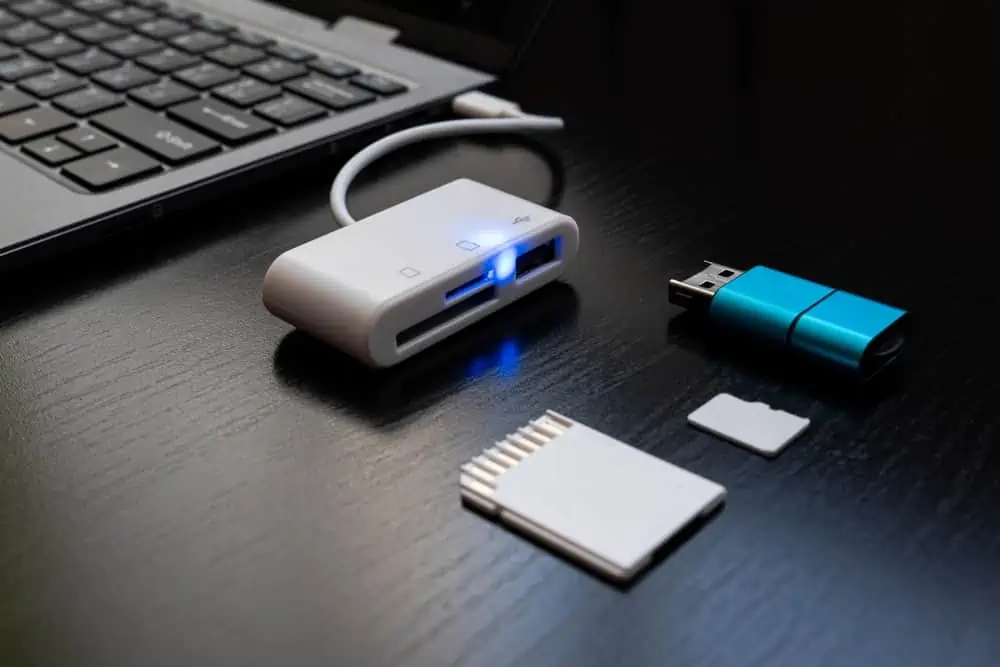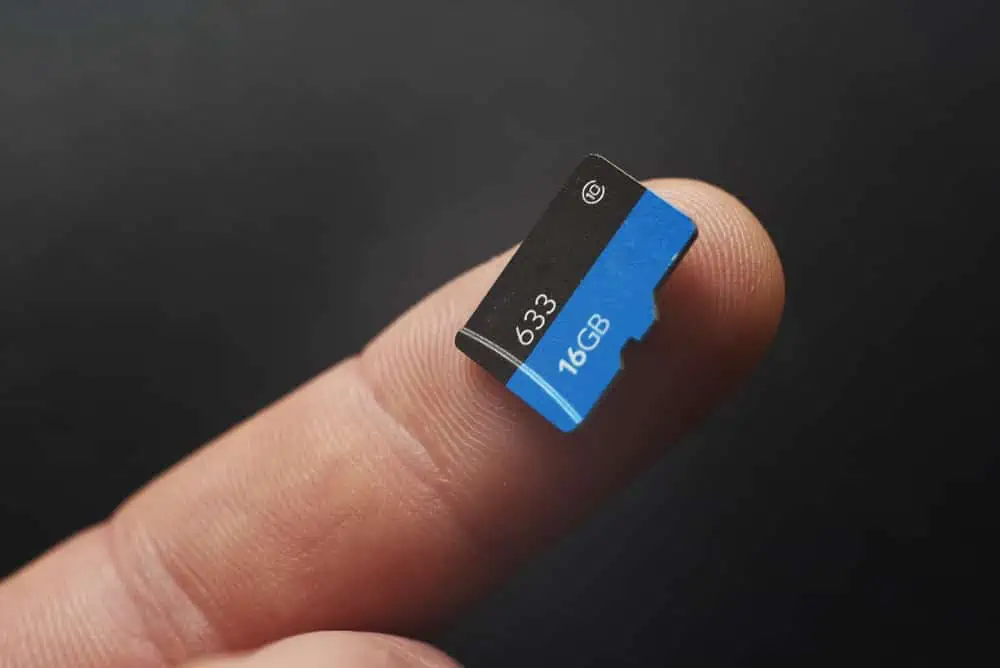Are you interested in learning about the mini SD card? This article provides comprehensive information on this type of SD card.
Overview
Mini SD (Secure Digital) card is a flash memory card introduced in 2003 as a smaller version of the original SD card. The mini secure digital card measures about 21.5 x 20 x 1.4 mm (W x D x H) and weighs around one gram.
That’s approximately half the size of the standard SD card, which measures 32 x 24 x 2.1 mm (W x D x H). Moreover, the mini SD card was developed by SanDisk, which is one of the manufacturers of the original SD card.
Furthermore, it was initially designed for mobile devices such as smartphones, digital cameras, and portable media players. Additionally, mini secure digital cards have a storage capacity ranging from 16 MB to 2 GB.
Although that storage capacity may seem small by today’s standards, it was considered a significant amount of storage during its release. However, the storage capacity of the card was later surpassed by the microSD card, which was released in 2005.
Hence, today, the microSD card is the standard SD card for mobile devices. Meanwhile, mini secure digital cards are now considered outdated.
In fact, most manufacturers don’t longer produce mini secure digital cards.
Features of a Mini SD Card
Having covered the basics of a mini SD card in the preceding section, we will now explore the key characteristics of this type of SD card.
Compatible with Several Devices
Although mini SD cards are specifically for mobile devices, they are compatible with every device that supports the standard SD card. Hence, with an SD card adapter, you can use them in almost any device that requires a full-size SD card.
Their compatibility makes them ideal for users needing a storage solution that can work with multiple devices.
It Uses NAND Technology
As with other secure digital cards and flash memory, mini secure digital cards use NAND technology. This means they are non-volatile.
Therefore, they can retain data even when you remove them from a device.
Offers Error Correction
Mini secure digital cards use advanced error correction features to ensure data integrity. This technology detects and corrects errors during data transfer, preventing data loss and corruption.
This feature is vital as it ensures that data is safe and secure during transfer.
Support Various File Types
Mini SD cards support various file types, including MP3, PDFs, JPEGs, and PNG. Hence, you can store and transfer a variety of files, photos, videos, music, and documents on your mini secure digital card.
This allows the card to be a versatile storage solution for users who need to store and transfer different types of files.
It Supports Several File Systems
Mini secure digital cards support various file systems, including FAT16, FAT32, and exFAT. This means you can easily transfer files between different devices supporting these file systems without worrying about compatibility issues.
By the way, a file system is the technique of organizing and storing data on a storage device. Besides, the ability to support various file systems makes accessing files on the mini secure digital card from different operating systems easier.
Benefits of Mini SD Cards
It Offers Adequate Security
Some mini-secure digital cards come with security features like password protection and encryption.
These features help protect sensitive data stored on the card from unauthorized access and theft. For example, the password protection feature allows users to lock the card with a password.
Therefore, preventing anyone without the password from accessing the data. Meanwhile, the encryption security feature ensures the data is encrypted before being stored on the card.
Doing so makes it practically impossible to access the data without the correct decryption key.
Low Power Consumption
Mini SD cards consume very little power, making them excellent for portable devices like smartphones and digital cameras.
This low power consumption ensures that the device’s battery doesn’t drain too much while using the card.
It is Cost effective
Mini secure digital cards are an affordable storage solution when you compare them to most storage devices.
However, the price ranges from a few bucks to a few hundred dollars, depending on the storage capacity and features. Basically, high-capacity and high-speed mini SD cards may cost more than low-capacity mini SD cards.
Hence, before purchasing the card, you should consider your storage needs and budget.
It is Portable and Compact
As its name suggests, a mini secure digital card is usually small and portable.
It measures about 21.5 x 20 x 1.4 mm, which is about the size of a sim card. Hence, it can fit into your pocket or bag.
Additionally, you will be able to move it around with ease. This makes it an excellent storage choice for individuals who need to store data on the go.
Durability and Longevity
Mini SD cards are designed to withstand extreme conditions like heat, cold, shock, and vibration.
Moreover, they are resistant to dust and water, making them a good choice for use in rugged environments. Besides, mini secure digital cards are developed to last long and withstand thousands of read and write cycles.
They also have a longer lifespan than most storage media like CDs or USB drives. Therefore, they are a reliable storage solution for archiving important data such as photos, videos, and documents.
Limitations of Mini SD Cards
Limited Storage Capacity
Mini SD cards offer a storage capacity ranging from 16 MB to 2 GB.
That amount of storage capacity is quite insufficient in today’s world of large files.
Vulnerable to Theft
While the compact size of mini secure digital cards can be an advantage, it can also make them challenging to handle.
This means mini SD cards can easily be stolen, misplaced, or lost. If such happens, you’re definitely losing all the files on the card.
Slow transfer speed. Compared to other storage devices like SSD, mini SD cards offer slow transfer speed.
In fact, the maximum transfer speed they offer is about 80 MB/s – 200 MB/s. This can be a deal-breaker for individuals who transfers large files frequently.
Prone to Physical Damage
Although they are durable, mini secure digital cards are not indestructible.
Hence, they are vulnerable to physical damage such as bending or crushing. In fact, if you expose them to excessive and unnecessary temperatures, humidity, or shock, you can damage them.
Therefore, even though they are durable, it is important you handle your mini SD card responsibly.
Conclusion
The mini SD card was a significant development in the history of flash memory cards and SD cards. It provides storage in a smaller form factor for mobile devices such as smartphones and digital cameras.
Moreover, it is highly versatile as it is compatible with several file systems and file formats. However, despite their many benefits, these cards have some drawbacks.
These include limited storage space and slow transfer speed.
Besides, the mini SD card has been largely replaced by the microSD card due to its limited storage space. Nonetheless, it remains a vital part of the flash memory card technology evolution.
We hope that you found the details in this article informative and valuable. If you did, please consider sharing your thoughts with our community platform using the comment form at the bottom of this page.
Alternatively, you can respond to the “Was this page helpful?” question below.
Finally, don’t forget to check out our Storage & Disk Technology Explained page for more informative articles like this one.




I have purchased 6 Mini SD cards from different suppliers and tried them in multiple PC’s with different USB SD adapters and non of them even get recognized. I tired, windows 7 , 10 and 11. We have a device that uses the mini card and its our only way to get data to it.
I have a hard time believing that all the mini SD cards I’ve purchased are bad.
What could be happening?